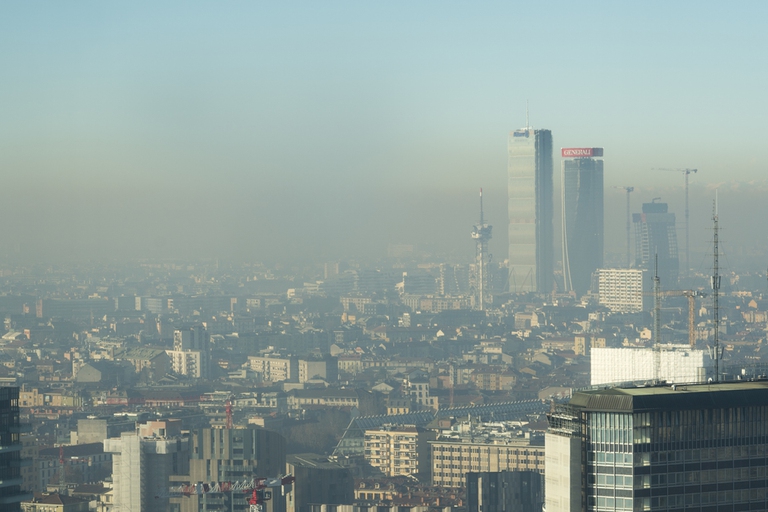https://www.lifegate.it/inquinamento-lombardia-agricoltura-pm25
- |
- A study by the Polytechnic University of Milan used artificial intelligence to analyze pollution data in Lombardy based to the different use of the territory.
- According to the results, the impact of agricultural land on the spatial distribution of fine dust concentration is comparable to that of industry and transport.
- For this reason, in pollution mitigation strategies, politics should also consider the impact of agriculture.
In Lombardy, the impact of agricultural land on the spatial distribution of the concentration of fine dust (PM2.5) is comparable to that of other sources of pollution much better known and studied, like the industrial plants, theurbanised or the road network:this is demonstrated by a study by Polytechnic of Milan, published on Chemosphere and carried out within the scope of D-Dust research project (Data-driven modeling of particulate with satellite technology aid), funded by the Cariplo Foundation.

Pollution of agriculture in Lombardy:more intense peaks, but limited in time
According to the data obtained, the impact of agriculture was recorded not only for the rural areas of Lombardy, but also in the most densely populated areas of the region;furthermore, it was found to be correlated with more intense pollution peaks compared to what was measured in industrial and urban areas, but with a limited duration in time.Among the individual crops analyzed, a negligible impact was recorded rice fields, more significant instead for cultivated land other cereals e corn.
The use of artificial intelligence for data analysis
The study has analyzed i satellite data and of program atmospheric models Copernicus for the measurement of concentration of PM2.5 together with open access land use database and the agricultural information system of the Lombardy Region.A was used for the analysis innovative Geoai system (Geomatics and earth observation artificial intelligence) composed of a three-stage architecture, which allows you to capture and interpret spatial dynamics at a local level, thus comparing the effects linked to different land use on pollution.
PM2.5, exposure related to cardiopulmonary risks
Air pollution is considered, by the United Nations, one of the greater environmental health risks globally and its mitigation is addressed in numerous sustainable development goals of the 2030 Agenda.Among all pollutants, one of the most worrying is PM2.5, particulate matter with a diameter of less than 2.5 μm, also due to its longer residence time in the atmosphere, resulting in an increased risk of exposure for the population.Exposure that is associated with increased morbidity and mortality from cardiopulmonary diseases.

According to the authors of the study, the results allow us to state that i politicians should also take into consideration agricultural activities to make decisions about mitigation of pollution.
